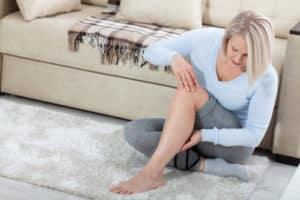
What Causes Vein Pain?
Vein pain is a byproduct of chronic venous insufficiency. Venous insufficiency occurs when one or more valves in a vein located in the leg stops functioning properly. These valves are supposed to open with the heartbeat to move blood forward. Then, the valves close so blood does not move backward in between heartbeats. Due to injury, aging, or other factors, valves may degrade and weaken. The result is swelling, inflammation, and other symptoms.
Venous insufficiency can present in a number of ways, including:
- Noticeably swollen, twisted veins
- Sensations of heaviness or cramping in the lower extremities
- Rash, swelling, or throbbing in the legs
- A feeling of hardened tissue beneath the skin
- Bruising or skin discoloration
The symptoms of venous insufficiency, including pain, can vary. All symptoms, however mild, warrant a visit with a healthcare provider. A thorough examination can help direct the next actions on the part of the patient. There are a few ways to manage the symptoms of venous insufficiency, most of which are focused on slowing the progress of the condition.
Tips for reducing the symptoms of venous insufficiency include:
- Exercise several days a week. A 45-minute walk every day is a great way to promote healthy circulation out of the lower extremities.
- If necessary, lose weight. Excess weight, especially when coupled by inactivity, is a leading cause of venous insufficiency.
- Move the legs several times a day. Sitting at a desk all day is detrimental to vein health. Patients are advised to get up and walk around for about 5 minutes every hour or so.
- Elevate the legs at least once a day. This helps move blood out of the lower extremities.
- Wear compression stockings to facilitate good blood flow out of the legs.
Vein pain and other symptoms should be examined by a vein specialist. In some cases, a doctor may prescribe an anti-inflammatory medication or blood thinner to address venous insufficiency. Professional treatments like sclerotherapy or radiofrequency ablation may also be recommended.
Receive the care you need for vein pain. Contact our Laurel, MD office at (855) 803-MIVC (6482) to schedule a visit.


Monday – Thursday: 9am – 5pm
Friday: 9am – 1pm
Saturday – Sunday: Closed